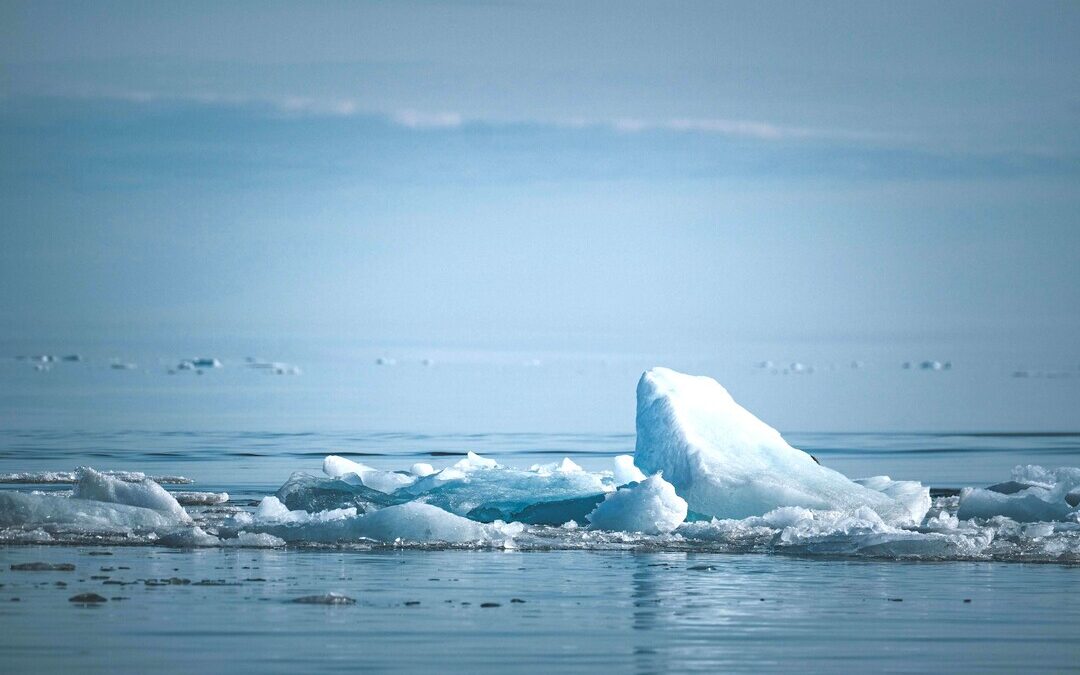Warming of 1.5°C Poses Major Threat to Polar Ice Sheets, Study Warns
New study warns 1.5°C warming threatens polar ice sheets, risking irreversible sea-level rise and global displacement.
A new scientific review has concluded that limiting global warming to 1.5 degrees Celsius above pre-industrial levels is insufficient to prevent long-term destabilization of the Greenland and Antarctic ice sheets, placing millions of people in coastal regions at risk from accelerating sea-level rise.
Published in Communications Earth & Environment, the study by researchers from Durham University, the University of Bristol, the University of Wisconsin–Madison and the University of Massachusetts Amherst synthesizes decades of paleoclimate data, satellite observations and climate model projections.
1.5°C Target “Too High”
The researchers warn that, despite being the ambitious goal of the 2015 Paris Climate Agreement, the 1.5°C threshold may already commit the planet to irreversible ice loss and multi-meter sea-level rise.
Even today’s warming of approximately 1.2°C above pre-industrial levels, if sustained, could generate ice sheet instabilities and sea-level rise of more than 10 millimeters per year — a rate that would challenge adaptation efforts worldwide.
“+1.5°C is not a safe limit for the polar ice sheets,” said lead author Chris Stokes of Durham University. “The evidence increasingly shows that a more appropriate target may lie closer to +1.0°C, or possibly even lower.”
Sea Level Rise Already Accelerating
According to the review, global mean sea level, or GMSL, has risen by roughly 20 cm since 1901, with the rate of rise accelerating from 1.4 mm/year in the early 20th century to 4.5 mm/year by 2023. The primary driver of this acceleration is mass loss from Greenland and Antarctica, which has quadrupled since the 1990s.
From 2006 to 2018, ice sheets contributed around 11.9 mm to GMSL, overtaking the contribution from mountain glaciers. The Intergovernmental Panel on Climate Change projects that under high-emissions scenarios, sea-level rise could exceed 15 meters by 2300, though with low confidence.
Past Warm Periods Reveal Ice Sheet Vulnerability
The study highlights lessons from historical warm periods, such as the Last Interglacial, which occurred about 129,000 years ago. Global temperatures were only 0.5°C–1.5°C warmer during this period than pre-industrial levels, but sea levels were 6 to 9 meters higher.
Evidence from these periods suggests that ice sheets respond non-linearly to warming, with small temperature increases potentially triggering large, self-reinforcing feedback, including marine ice sheet and ice cliff instabilities, that lead to rapid and irreversible ice loss over human timescales.
Tipping Points May Already Be Passed
The authors caution that signs of instability are already apparent. West Antarctica’s Amundsen Sea Embayment and central-west Greenland are exhibiting behaviour consistent with the onset of irreversible retreat.
Recent satellite data show that the rate of ice loss from Greenland and West Antarctica has reached 372 gigatonnes per year, with Greenland’s contribution alone dominating global sea-level trends.
“These ice sheets may already be committed to retreat,” said co-author Robert DeConto. “We may not know a tipping point has been crossed until it’s too late.”
Call for Stronger Climate Targets
The review urges policymakers to adopt the precautionary principle and pursue even more ambitious mitigation targets than currently set. A return to global mean temperatures near +1.0°C — akin to the climate of the 1980s — may be necessary to stabilize ice sheets.
The authors also call for more research into the impacts of reducing global temperatures below present levels, a scenario rarely addressed in current climate models.
A Just and Safe Future
While acknowledging the uncertainties surrounding exact thresholds, the authors argue that continued warming beyond 1.2°C places the world on a trajectory toward profound and potentially irreversible change. With over 1 billion people living within 10 meters of sea level, the socio-economic consequences could be staggering.
“This is not just a scientific concern — it’s a humanitarian imperative,” said co-author Andrea Dutton. “We must redefine what constitutes a safe climate future.”
Also Read:
World Marks 10 Years of Record-Breaking Heat as 2024 Tops Temperature Charts
Nirmal Menon
Related posts
Subscribe
Error: Contact form not found.


